All issues

Volume 46, Issue 4
Displaying 1-3 of 3 articles from this issue
- |<
- <
- 1
- >
- >|
Preface
-
Kazuo WATANABE2011Volume 46Issue 4 Pages 175
Published: 2011
Released on J-STAGE: May 23, 2011
JOURNAL FREE ACCESSDownload PDF (596K)
Review Article
-
Arata NISHIMURA2011Volume 46Issue 4 Pages 176-183
Published: 2011
Released on J-STAGE: May 23, 2011
JOURNAL FREE ACCESSA fusion reactor generates a lot of 14 MeV neutrons, some of which penetrate shielding blankets, stream out of ports and reach superconducting magnets. Some important studies were performed in the 1970s and a basic understanding of the mechanisms of neutron irradiation effect was established. Advances in the design concept of nuclear fusion reactors led to the need for consistent studies on the neutron irradiation effect of A-15 strands such as Nb3Sn and Nb3Al, which are strong candidates for fusion reactors. In the early 2000s, a progressive attempt to organize the collaborative research of universities and national institutes was started using a 14 MeV neutron source at Japan Atomic Energy Agency. This paper outlines the neutron irradiation issues related to superconducting magnets for fusion, and a brief history of research on the neutron irradiation effect is provided. In addition, experimental results regarding changes in the superconducting properties of Nb3Sn and Nb3Al strands by neutron irradiation obtained in the newly established collaborative framework are presented, and general mechanisms for the property changes are introduced.View full abstractDownload PDF (1765K)
Cryogenic Group
-
Tatsuo SHIKAMA2011Volume 46Issue 4 Pages 184-185
Published: 2011
Released on J-STAGE: May 23, 2011
JOURNAL FREE ACCESSDownload PDF (1185K)
- |<
- <
- 1
- >
- >|